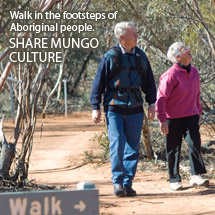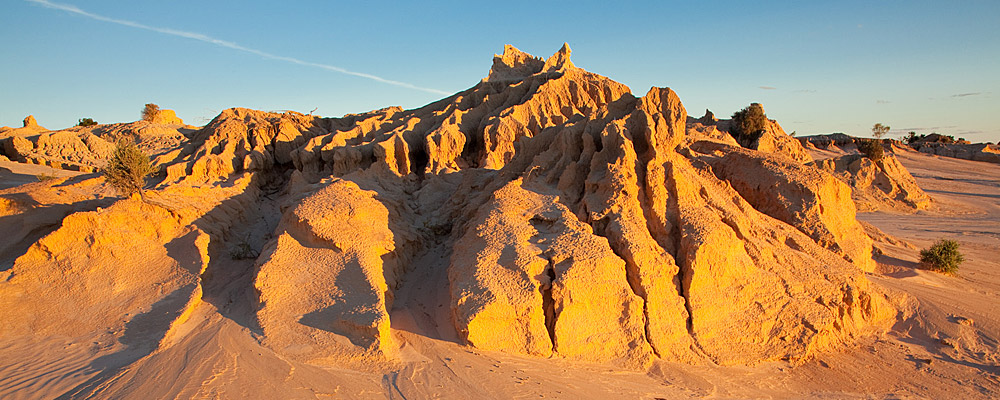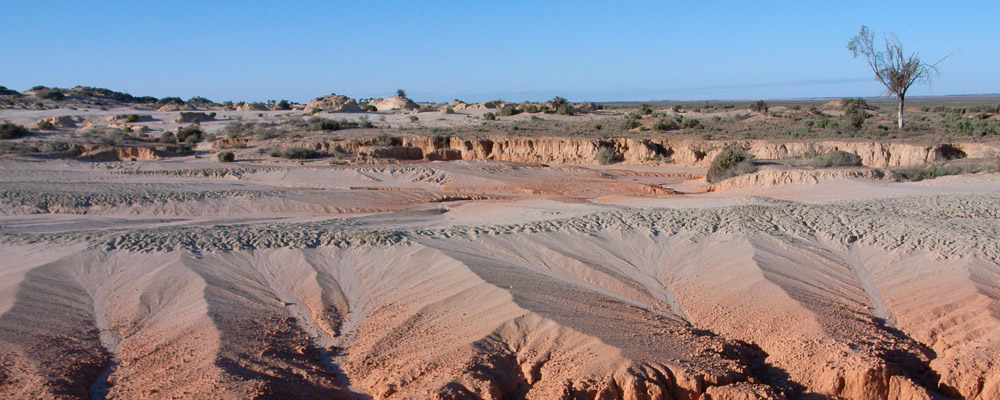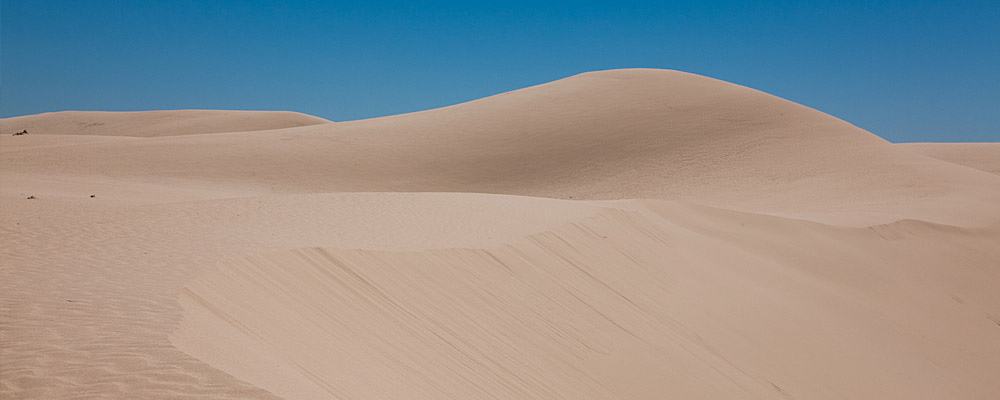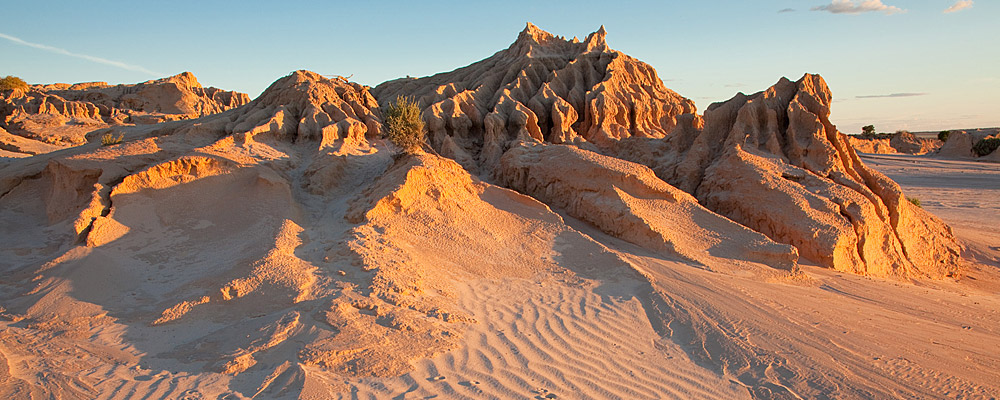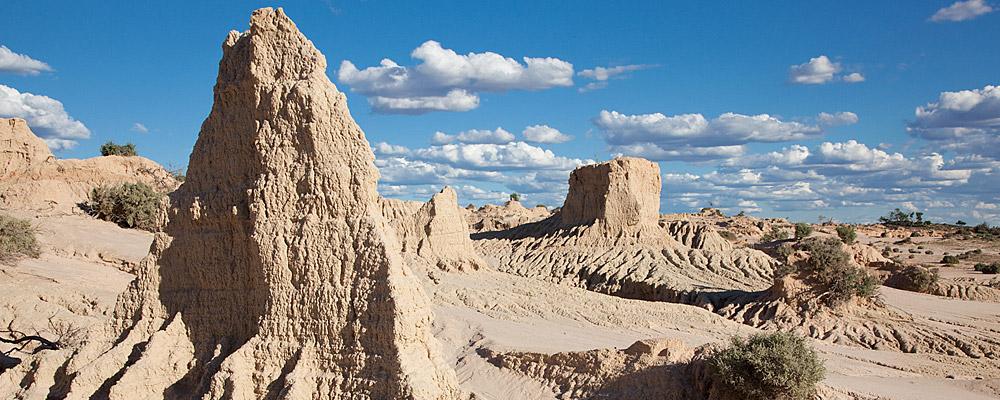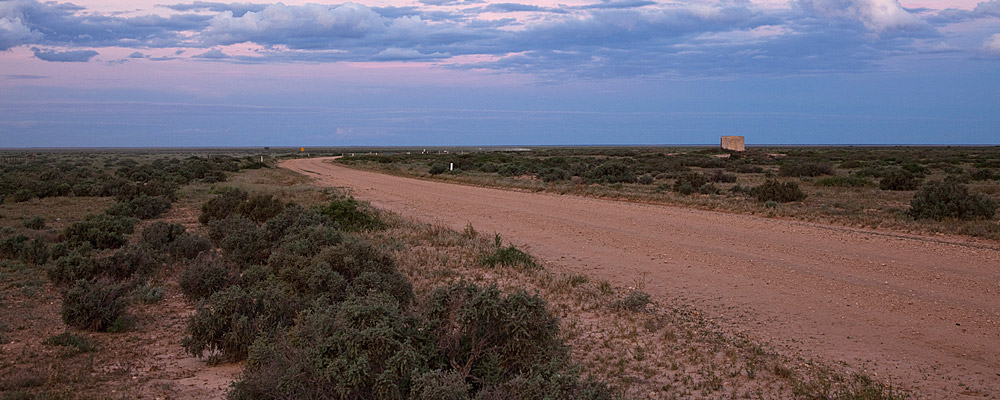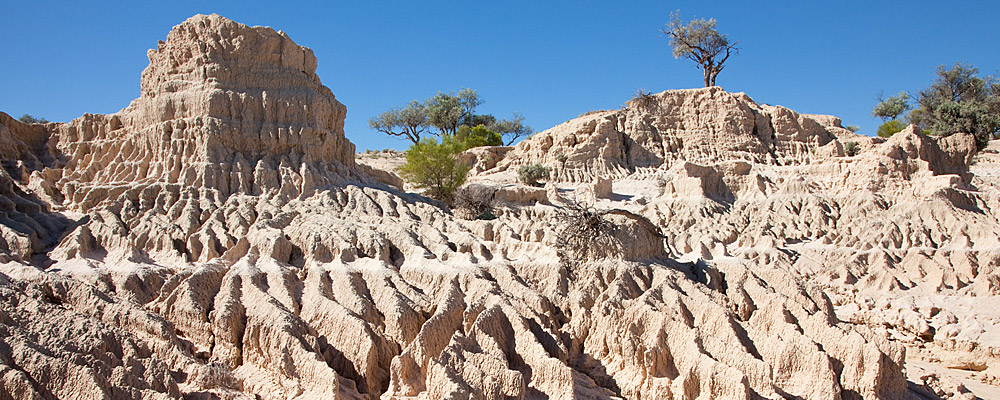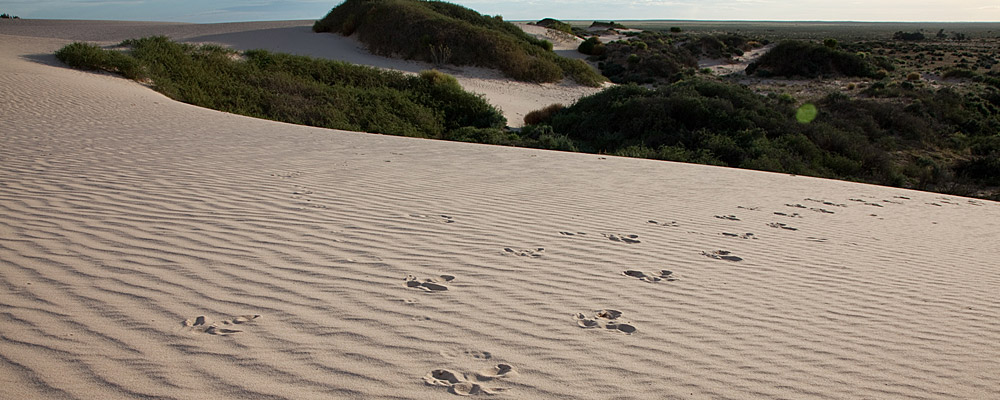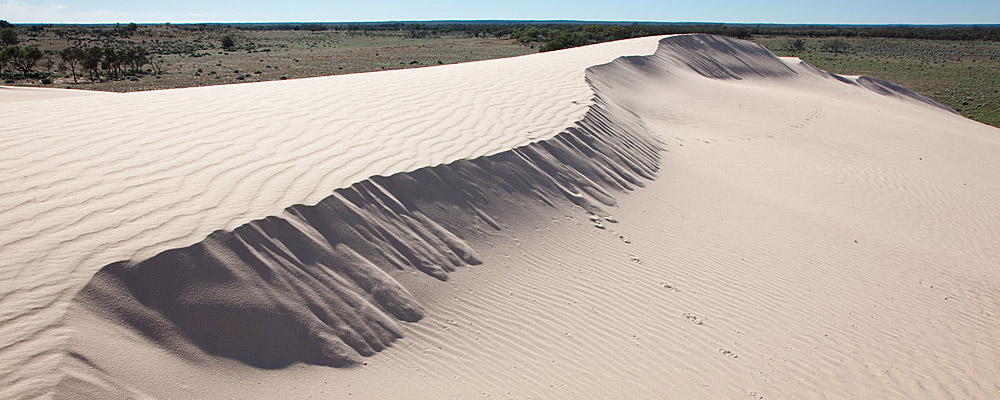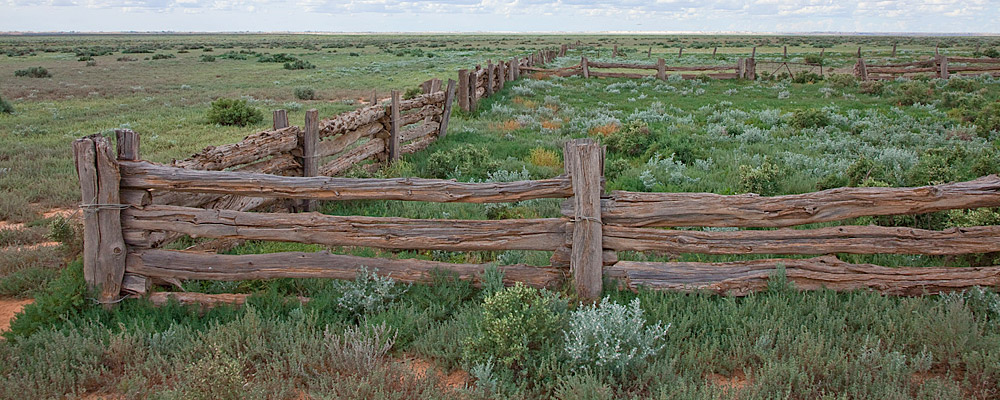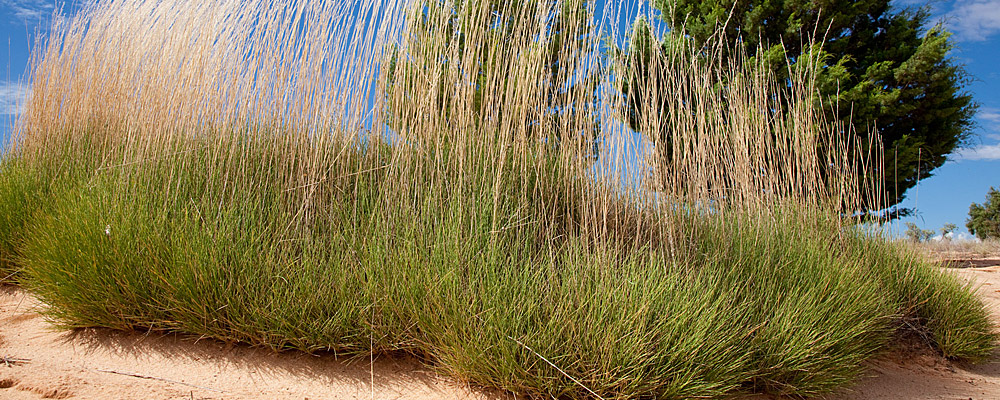Understand Mungo
Mungo's Environment Today
Recent changes
It is generally accepted that Aboriginal people have influenced the Australian environment for the last 50,000 years or more, but there is great debate about the extent of that influence. The main tools available to hunter-gatherers for changing things at a large scale were fire and hunting. Repeated burning can change the pattern of Vegetation, and therefore even local climate to some degree. Hunting can reduce animal populations and possibly hasten extinctions.
Vegetation has changed and animals have become extinct in Australia over the time people have lived here, but this period also corresponds with big shifts in climate and some landscape changes - such as mountain glaciers, sea level changes and moving dunes. Currently, there is no scientific agreement as to whether megafauna extinctions and the reduction of moist vegetation in Australia were driven mainly by climate, or mainly by Aboriginal practices.
The Thylacine (Thylacinus cynocephalus) and Tasmanian Devil (Sarcophilus harrisii) became extinct in the Willandra area and mainland Australia relatively recently. This may have been due to the arrival of the Dingo (Canis lupus dingo) about 4,000 years ago.
There is no doubt that with the arrival of European settlers in Australia in 1788, humans became a major ecological force that led to dramatic changes in just 200 years. The Mungo landscape does not look the same as it did in 1830.
The Willandra Lakes area was not cleared of its native vegetation like moister lands to the east, but heavy grazing, pests such as rabbits and goats, changed patterns of fire and timber-getting have all had their impacts. Increased water storage has encouraged higher kangaroo populations which have added to grazing pressure.
It is likely that some plants have gone extinct, while others have been much reduced. When Australia was 'riding on the sheep's back' it was actually riding partly on the back of Old Man Saltbush (Atriplex mummularia), a particularly nutritious, drought-resistant and widespread shrub much loved by sheep and cattle. Old Man Saltbush these days is uncommon in the Willandra area.
Many weeds have invaded as a result of overgrazing, and other key elements of the native vegetation are in decline. A lot of cypress pine (Callitris spp.) was cut down for timber in the early days of pastoralism, and seedlings now struggle to reach maturity because they are nibbled off by sheep (outside the national park), rabbits and goats. Belah (Casuarina pauper) and Rosewood (Alectryon oleifolius ssp. anescens) are similarly threatened in the long term. Acacia shrublands usually found on the low-lying sandplain areas are also declining. These include communities of Mulga (Acacia aneura), Nelia (Acacia loderi) and Yarran (Acacia melvillei). All three species exhibit senescent populations with no recruitment. Also, on the Mungo lunette the Acacia ligulata community is in decline due to erosion.
The story is even sadder for fauna. While the larger macropods have benefited from increased water supplies, many other mammals have become extinct in the Willandra area, and across western NSW, since white settlement. These include:
- Northern Hairy-nosed Wombat
- Lasiorhinus krefftii
- Bridled Nailtail Wallaby
- Onychogalea fraenata
- Eastern Hare-wallaby
- Lagorchestes leporides
- Brush-tailed Bettong
- Bettongia penicillata
- Burrowing Bettong
- Bettongia lesueur
- Western Barred Bandicoot
- Perameles bouganville
- Bilby
- Macrotis lagotis
- Numbat
- Myrmecobius fasciatus
Most of these were burrowing mammals of small to medium size, and were highly vulnerable to competition from rabbits and predation by the European Fox and Feral Cat.
Birds of the area which have become threatened, mainly due to changes in Vegetation, include:
- Australian Bustard
- Ardeotis australis
- Chestnut Quail Thrush
- Cinclosoma castanotum
- Gilbert's Whistler
- Pachycephala inornata
- Pink Cockatoo
- Lophochroa leadbeateri
- Malleefowl
- Leipoa ocellata
